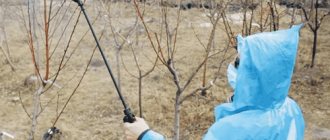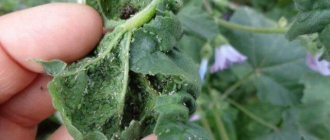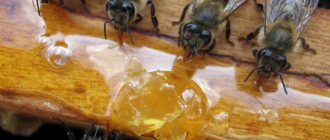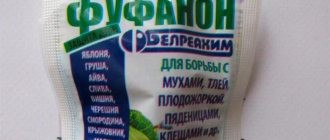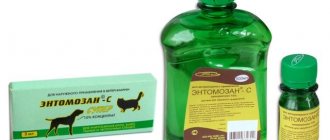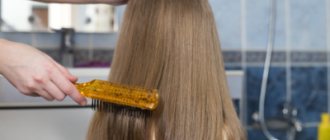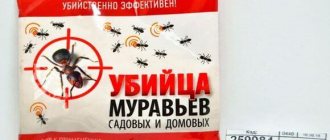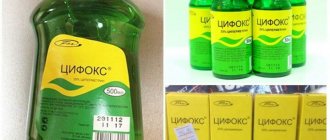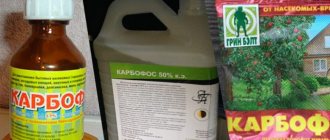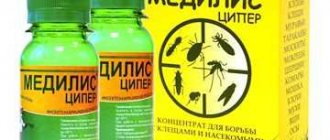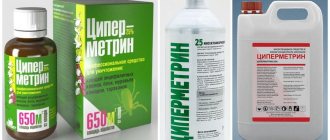Bordeaux mixture is a very popular broad-spectrum fungicide. For many years, this substance has been used by amateur gardeners to protect plants from fungi and bacteria. Popularly it has a simple designation - copper sulfate mixed with lime. The liquid contains copper sulfate and milk of lime.
This drug can be considered universal, because it fights all types of bacterial and fungal diseases. In addition, copper, which is part of the Bordeaux mixture, is a necessary microelement that promotes the proper growth and development of the plant. Biologists have proven that in our time there is a copper deficiency in acidic sandy and peat-rich soils.
Even in ancient times, copper sulfate was used for medicinal purposes. By the way, you can now find drugs in pharmacies that contain this substance. Copper sulfate was first discovered at the beginning of the 19th century. Modern summer residents often wonder how to prepare a 3 percent Bordeaux mixture. Let's look at all the intricacies of preparing this liquid at home.
What is Bordeaux mixture and what is it used for?
Description of the drug
Bordeaux mixture or mixture is a preparation that consists of copper sulfate and lime. It is sold in the form of a powder or concentrate, which just needs to be diluted with water. It can also be made at home by mixing copper sulfate and slaked or quicklime yourself.
The ready-to-use solution looks like an opaque liquid of a pale blue color. It adheres well to the surface of plants and lasts up to 30 days.
Bordeaux mixture is used to protect garden crops from various diseases, mainly fungal ones. On fruit trees and shrubs it helps against scab, rust, powdery mildew, anthracnose, blight, rubella, coccomycosis, clusterosporia, fruit rot and other diseases. On vegetable crops, it fights pathogens of late blight, peronospora, cercospora, rust, septoria, bacteriosis and various rots. It protects grapes from rubella, melanosis and mildew. It is also used to treat medicinal and ornamental plants. However, it must be used in advance, as a preventive measure, at the latest when the initial signs of disease appear.
Bordeaux mixture repels some insects, but in general it does not help against agricultural pests. Due to the fact that the Bordeaux mixture contains lime, the drug acts more gently and is less dangerous for plants than pure copper or iron sulfate.
Chemical composition and price
Active ingredients of the drug:
- copper sulfate;
- lime;
- water.
Copper is the main active ingredient; it is this chemical element that gives the solution a beautiful blue color. It effectively fights many pathogenic bacteria and fungi, but excess can cause harm to crop plants. Copper can cause burns on foliage and other parts of plants, so lime is added to Bordeaux mixture as a neutralizer.
Although Bordeaux mixture is inexpensive, gardeners can still save money if they prepare it themselves at home.
However, it should be borne in mind that when Bordeaux mixture is produced in a factory, the dosage of all components is carefully observed, which is not always possible at home.
Operating principle
The principle of the effective action of the drug is that under the influence of carbon dioxide hydrolysis occurs in plants, so the salt of copper sulfate actively decomposes.
As a result of such a reaction, a thick sediment is formed that adheres to leaf surfaces, completely covers them and prevents pathogenic infections from penetrating inside.
Important! Treatment with Bordeaux mixture is not carried out if it is a hot, rainy summer - in such conditions, hydrolysis occurs more actively, as a result of which the drug decomposes faster. And the effect of using the product will be short.
Advantages and disadvantages
The main advantages of Bordeaux mixture include:
- after treatment, the effect on pathogenic microorganisms quickly begins; not washed away by precipitation;
- protective effect for plants after spraying – at least 30 days;
- can be used against many pathogenic bacteria and fungi;
- can be used to process many garden and vegetable crops;
- low price of the drug.
But Bordeaux mixture also has its disadvantages , which you need to remember:
- the drug cannot be used in tank mixtures with organophosphate pesticides and those substances that decompose in an alkaline environment;
- processing is carried out carefully, processing leaf plates and stems from all sides;
- copper is harmful to the human body, so when working with the drug you must follow safety rules;
- increasing the dosage or number of treatments can harm the plants, since Bordeaux mixture is phytotoxic;
- the components of the drug gradually accumulate in the soil, so Bordeaux mixture should not be used often;
- when increasing the dosage when preparing the working solution, it can burn the leaf plates;
- The product is used immediately after preparation, since when stored in a solvent, its components can clog the sprayer holes.
But if you use the drug in accordance with the instructions, there will be no such disadvantages.
Safety precautions at work
Bordeaux mixture is dangerous to health. When working with it, you must prevent it from getting on the skin, eyes, or mucous membranes of the respiratory system.
A respirator, rubber gloves, a hat and a work suit made of thick fabric will help with this.
Ingestion of even a small amount of Bordeaux mixture leads to poisoning. This is indicated by a metallic taste in the mouth, nausea, chills, and excessive salivation.
First aid:
- Provide the victim with access to fresh air;
- Rinse your mouth well with water;
- Change work clothes;
- Visit a doctor immediately.
The drug causes burns on the skin.
First aid
- Wash your hands thoroughly with plenty of running water;
- In case of burns, remove remaining lime with a cotton swab moistened with vegetable oil.
Plants must be sprayed very carefully. If the aerosol enters the respiratory system, it can lead to a feverish state, which is accompanied by nosebleeds, attacks of tachycardia, and bloating. First aid
First aid
- Release the victim to air;
- Rinse your mouth with plenty of water;
- Call a doctor immediately.
Attention!
Never spray Bordeaux mixture near vegetables and fruits that you plan to harvest in the next 2 weeks.
Be sure to wash the crop before eating.
If you are poisoned by copper salts, you must go to the hospital. The doctor will adjust the treatment and prescribe all the necessary medications.
To ensure that treating plants with Bordeaux mixture is effective, adhere to the following rules:
- Treat plants in the evening;
- When spraying plants, the weather should be calm;
- A guarantee of the best result is to treat the plants before the buds open and before flowering begins;
- High humidity and temperature require refusal to treat plants. Otherwise, leaf burns cannot be avoided;
- Experienced gardeners recommend using Bordeaux mixture to prevent the disease.
How to prepare Bordeaux mixture at home
All components are mixed according to certain rules. You can’t just pour them into a common container and add water. It is necessary to dilute copper sulfate and lime separately, and then combine them.
It is more convenient to prepare the drug for 10 liters at once. To do this, you will need two 5-liter buckets, one 10-liter bucket, a wooden stirrer and gauze or a fine-mesh sieve for filtering. All containers must be either plastic (preferably polypropylene or PVC) or glass. You can use enamel cookware without chips or scratches on the coating, but in no case metal.
In what proportion to mix copper sulfate and lime depends on how strong the solution is needed - 1% or 3%. To obtain 3% Bordeaux mixture per 10 liters of water, you will need 300 g of copper sulfate powder and 300-400 g of quicklime (slaked lime - 50 g less). For a 1% solution, take 100 g of vitriol and 100-140 g of quicklime (slaked - 100 g). The optimal ratio is 1:1 or 3:4, i.e. lime a little more.
What is the sequence of actions:
1. First make a solution of copper sulfate . To prepare it, use hot water at a temperature of 45-50°. Pour 2 liters of water into a 5-liter bucket and, stirring constantly, gradually pour vitriol into it. When it is completely dissolved, another 3 liters of heated water is poured into it, stirring again.
2. Then lime milk is prepared . First, the lime is slaked. To do this, pour it into another 5-liter bucket and, stirring, pour cold water into it in a thin stream until a creamy mass is obtained. The process of slaking lime occurs rapidly - it hisses and splashes, so during this work you need to use personal protective equipment. When the reaction is over, add more water (a total of 5 liters is needed to dilute the lime). After this, the solution is continuously stirred for another 15 minutes. The result is lime milk, which is essentially diluted slaked lime.
3. Prepared solutions of copper sulfate and lime are mixed with each other in a 10-liter bucket. But first you need to let them cool, ideally to a temperature of about 15°. A solution of copper sulfate is poured into the milk of lime, gradually and stirring. This is a very important point. If you do the opposite, i.e. If you pour milk into vitriol, the resulting Bordeaux mixture will be less stable and effective.
4. Check the acidity of the resulting solution . It should be neutral, since it is too acidic to burn the leaves, and a highly alkaline one does not adhere well to the surface. To determine acidity, you can use special indicator strips or an ordinary clean nail. It is dipped into Bordeaux mixture, and if after 1-2 minutes a reddish coating appears on it, it means that the preparation is too acidic. A pre-prepared concentrated solution of slaked lime (100 g per 900 ml of water) must be added to it. However, do not overdo it - too much of it can also cause burns.
High acidity may be indicated by a greenish tint to the liquid, while a proper Bordeaux mixture should be sky blue.
5. The resulting solution is filtered through 4 layers of gauze or a sieve. Now it can be used.
You cannot add water to the finished Bordeaux mixture, otherwise it will quickly separate. It is also not recommended to mix it with other pesticides, especially organophosphorus ones. You should not add laundry soap to it either, this will not improve the adhesion of the drug. Bordeaux mixture is used immediately after preparation. If you store it for a long time, it loses its effectiveness and does not adhere well to plants. As a last resort, you can postpone its use for a day, and then to improve adhesion you can add sugar to it - 1 tbsp. spoon per 10 liters of solution.
Factors influencing the quality of Bordeaux mixture
It is advisable that the solution be as cold as possible when mixing, because this results in the formation of the smallest crystals of chemical substances.
Adding water to already prepared liquid is strictly prohibited. Prepared solutions of copper and lime must be brought to the desired consistency before mixing.
Before using the mixture on plants, you need to carry out its chemical reaction. This is very simple to do: a nail, the tip of a knife or a wire is lowered into the solution. Bordeaux mixture, which was prepared incorrectly, will leave a red coating on the iron object.
This liquid contains an increased dose of copper sulfate, which means it can burn the plants. To eliminate this effect, milk of lime is added to the prepared mixture until the iron object is no longer coated with copper.
For more information, you can watch the instructional video.
Preparation of working solution
Preparing Bordeaux mixture is not difficult, but the process requires following the instructions for use. Depending on when treatment with this drug is carried out, a solution of different concentrations is prepared. To prepare a 1% solution you will need 100 g of vitriol and 120 g of lime, and to prepare a 3% solution - 300 and 400 g, respectively. The preparations are first diluted in different containers in a small amount of hot water, then brought to the required volume with cold water and the components are mixed.
After preparation, litmus paper is placed in the solution - if its color does not change or becomes red-crimson, then the solution is neutral or alkaline. If litmus turns blue, then Bordeaux mixture is alkaline and can be used for processing.
Spraying trees
The biggest mistake a novice gardener makes is allowing trees to grow on their own, neglecting their regular treatment. Depending on the stage of development of the fruit-bearing plant, from 2 to 12 liters of solution will be required .
To apply the mixture evenly to the trees, you will need a sprayer. This device will allow you to quickly apply the solution to trunks, branches and foliage. The sprayers are easy to operate. The pressure in the cylinder is created by literally several translational movements of the rod.
To spray tall trees, devices with long hoses are used, onto which spray nozzles are attached. The longer the supply structure, the better the treated objects will be covered with the solution. The nozzle should be adjusted so that it creates a thick cloud of small droplets that will evenly cover all parts of the irrigated plant.
Young trees and specimens experiencing pest attack or infection are treated as follows:
- intensive spraying with a 3% solution before the beginning of the growing season and after the end of leaf fall;
- 4 approaches during the warm season using a 1% solution.
Instructions for use
Bordeaux mixture with a concentration of 3% is used to treat cultivated plants before the start of sap flow in early spring or after leaf fall in the fall. Spring treatment is more effective than autumn treatment, since during the period before bud break, fungal spores are very active and especially vulnerable. In the fall, they prepare for winter and are less susceptible to the effects of the drug. During the season, only a 1% solution is used to spray various crops.
Trees and shrubs are sprayed in the spring before buds begin to open or in late autumn after leaf fall with 3% Bordeaux mixture, and after the appearance of leaves, incl. in summer – 1%. Vegetables and other annual crops are treated exclusively with a 1% solution. During flowering, spraying is temporarily stopped so as not to poison bees and other pollinators.
Before starting treatment, you need to carry out some procedures in the garden. If work is carried out in early spring, it is necessary to monitor the weather - spraying cannot be carried out during rains. Also, when processing trees and shrubs in spring or autumn, you need to carefully inspect the tree trunk circles and remove all remnants of vegetation and fallen leaves from them. If the collected plant debris is not damaged by disease, it can be placed in a compost pit. Otherwise, it is burned outside the site or buried deep in the ground.
Spraying should be carried out in dry, windless weather early in the morning, so that the vegetative mass has time to dry during the day after spraying. It is advisable that after treatment there is no rain for several days - this way the drug will have time to act on pathogens and will not cause burns.
Important! If the weather is cold and rainy in autumn, it is better to leave the plants without such spraying, because it will be ineffective.
During autumn processing, you need to carefully water not only the garden crop itself, but also the tree trunk, without touching the lawn grass.
For spraying to bring maximum benefit, the liquid should remain on the plants in the form of a thin film, and not large drops, so it is better to use a fine sprayer. The entire surface must be covered with the solution so that pathogenic organisms do not have a chance to survive after treatment.
You cannot combine spraying plants with Bordeaux mixture with treating them with other preparations, as they can neutralize each other.
How to apply for different crops
Spraying with Bordeaux mixture is carried out carefully; you must try to treat all hard-to-reach places. When used correctly, the crops will be protected from pathogenic microorganisms for 30 days.
consumption rates for adult apple and pear trees are 10-15 l, for pome crops (plums, cherries) - 6-10 l, for any young trees - 2-3 l. When processing grapes, fruit and ornamental shrubs, 1.5 liters per 10 square meters are consumed. m. Tomatoes, peppers, eggplants, and cucumbers are sprayed at the rate of 2 liters per 10 square meters. m, and potatoes, beets and melons - 1 liter for the same area. For strawberries and wild strawberries, 0.5-1 liter per 10 square meters is enough. m.
For processing stone fruit crops
In early spring, before sap flow begins, the following fruit trees are treated with a 3% solution of this drug:
- plum;
- cherry;
- cherries;
- peaches;
- apricots.
During the growing season, two more treatments can be carried out with Bordeaux mixture (at a concentration of 1%). The interval between spraying should be 12-14 days. There is also 1 more treatment scheme - before buds open, after flowering, then at intervals of 2 weeks.
For young trees, 2 liters of working fluid is sufficient, and for adults – up to 10 liters.
For grapes
This garden crop can be treated with Bordeaux mixture only in early spring, using a 3% working solution. It is important to use for processing only the amount of working solution specified in the instructions for use, since excess copper leads to a deterioration in the quality of the harvested grape bunches and prevents new shoots from appearing.
For tomatoes
This vegetable crop is treated with a 1% solution of Bordeaux mixture against late blight and macrosporiosis. Tomatoes can be treated with this drug 4 times per season with an interval of 12-14 days. For every 10 square meters of area, up to 2 liters of working fluid are required.
For cucumbers
Cucumbers are treated with this drug against anthracnose, spotting and bacteriosis. This crop is sprayed up to 3 times per season with an interval of two weeks. For 10 sq. m area requires up to 2 liters of product.
For potatoes
Potatoes are treated with Bordeaux mixture (1% solution) against late blight and macrosporiosis. The tops can be sprayed for preventive purposes and as protection quite often. For every 10 sq. m requires 1 liter of liquid.
Application of Bordeaux mixture
For fruit pome trees
Pear, quince and apple trees are treated with Bordeaux mixture against the following diseases:
- black cancer;
- scab;
- rot;
- phyllostictosis;
- different types of spots.
It is enough to treat these trees twice for preventive purposes in the spring with 3% Bordeaux mixture and 1% solution during the growing season. In total, you can use this product no more than 6 times per season.
Young trees are treated for preventive purposes every 3 years.
For berry bushes
To prevent rust from appearing on currant or gooseberry bushes, these bushes should also be treated with Bordeaux mixture for preventive purposes. It will help rid these plants of anthracnose and spotting. Shrubs are treated in the spring before sap flow begins with a 3% working solution.
Other crops
Onions, beets, flowers and ornamental shrubs are processed up to 3 times, medicinal plants – 1-2 times.
Peppers, eggplants and melons are sprayed 3 times - at the stage of 2-3 true leaves, then after 10-14 days, and if necessary again after 2 weeks.
Processing pear, apple, quince
In early spring, apply a single treatment with a concentrated solution of Bordeaux mixture. It is necessary to have time before the flower buds bloom. During the period of active life, a mixture of light concentration is used. During the season, no more than 5 sprayings of stone fruit trees with Bordeaux mixture are carried out.
This solution is a real salvation for apple, quince and pear trees from scab, fruit rot, black cancer, phyllosticosis and spots of various origins.
For strong and healthy trees, irrigation with blue liquid is required even less often - once every 3 years.
Precautionary measures
In order not to harm garden and vegetable crops when using this product, it is necessary to adhere to the recommended dosage when preparing the working fluid, and also not to exceed the number of applications per season.
From the moment you prepare the working fluid until the end of the work, you must wear a respirator, safety glasses and rubber gloves.
While working, you must not eat, drink or smoke. And upon completion of the procedure, you need to wash your face and hands with soap under warm running water, and put your clothes in the wash.
If you follow all the rules, no problems will arise. When properly prepared and used, Bordeaux mixture will only bring benefits and will perfectly protect plants from diseases.
Processing berry bushes
Berry bushes also need to be sprayed with Bordeaux mixture. In early spring they are treated with a more concentrated solution. This preventive measure is aimed at protecting berry bushes from leaf spot. At the growing season, a less saturated concentrate is used, and no more than 3 sprayings are carried out during the entire warm season. For 2 medium-sized bushes, about 1.5 liters of blue mixture is usually required.
Properly prepared liquid forms a thin bluish film on the surface of the leaves. If, as a result of the treatment, white, brown or blue spots appear, then the procedure will not be beneficial.
Video on how to use Bordeaux mixture
What does Bordeaux mixture consist of, how to prepare and use it correctly. To protect against what diseases and on what crops the drug is used. What can replace Bordeaux mixture? We recommend viewing!
Each gardener chooses for himself which drugs to use to control and protect garden and vegetable crops on his site. But you need to take into account that Bordeaux mixture is a time-tested fungicide, and its effectiveness in combating fungal diseases is well known to summer residents. Therefore, it is advisable to always have this drug in your garden medicine cabinet.
History of creation
Even in ancient times, people noticed that copper sulfate kills fungi of all types. It is not for nothing that copper sulfate is sold as a separate product in our time. It is used by builders and carpenters to treat wood against rotting. Wood impregnated with this substance is practically not subject to rotting and mold in damp places: basements, cellars, attics, bathhouses.
Treating logs and boards with Bordeaux mixture is not difficult, since the wood absorbs the copper compound well. The situation is more complicated with living plants that cannot retain copper sulfate on their leaves. For this, lime was added, that is, milk of lime. Slaked lime, together with copper sulfate, forms a new compound called Bordeaux mixture.
The developer of this mixture was the French botanist Pierre Marie Millardet. Initially, the find was used to protect and treat vineyards from the mold fungus Plasmopara viticola, which provokes the development of a disease such as downy mildew.
Nowadays, Bordeaux mixture is used in a wide range. In addition to vineyards, other plants are also treated with it against fungal diseases:
- Tomato and potato bushes from macrosporiosis, late blight;
- Vegetables such as cucumbers, onions, garlic, carrots from septoria, downy mildew, anthracnose;
- Berry crops such as raspberries, strawberries, strawberries from spotting;
- Fruit bushes and trees from rust, scab, fruit rot, powdery mildew;
- mildew (grape).
Harm to humans
Bordeaux mixture is a toxic compound for the human body. Once in the digestive tract or respiratory organs, it causes severe intoxication, accompanied by irreversible inhibition of internal systems. Without timely medical care, a person dies.
You should absolutely not eat vegetables and fruits that have recently been treated with Bordeaux solution. Plant products are suitable for food only after at least 3 weeks after chemical exposure.
Before eating, vegetables and fruits must be thoroughly washed, or better yet, soaked in water for several hours.
Preparation
To prepare Bordeaux mixture, you need to create optimal working conditions. You will need:
- closed clothing, gloves, since you will have to deal with chemicals;
- 2 enamel, plastic, wooden or glass containers (iron buckets cannot be taken);
- wooden stick for stirring;
- gauze piece for straining.
Since Bordeaux mixture is a toxic substance, it is better to wear glasses or a mask while working.
Reviews
Agafya: I use Bordeaux mixture not only in the spring, but also at the end of summer, after harvesting, when the susceptibility of plants to infections is especially high. I treat currants, strawberries, and grapes with the composition in both September and October.
- How to use actofite against pests correctly
Sergey: Bordeaux mixture is not absorbed by plants and fruits, and this is its great advantage over other fungicides. But this is precisely why plants have to be processed by leaves especially carefully.
Alexander: I am an experienced summer resident, so I am familiar with Bordeaux mixture firsthand: every spring, before the sap begins to flow, I treat my orchard and berry bushes with this preparation. During the summer period I can use other means, but before the dormant period I treat the garden only with Bordeaux mixture. The drug is inexpensive, reliable and trouble-free.
Alla: you know, I tried so many different products on my plants, but I came to the conclusion that a cheap drug does not mean bad, but with an expensive one you may not achieve success. I use Bordeaux mixture and always have it in stock.
Official website and manufacturer's recommendations: https://dacha.avgust.com/catalog/bordoskaya-zhidkost/
